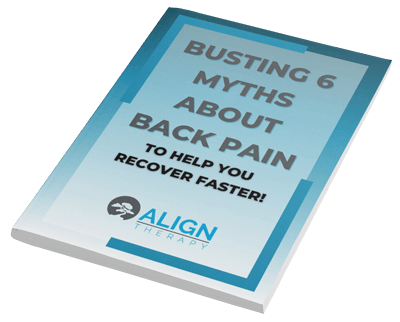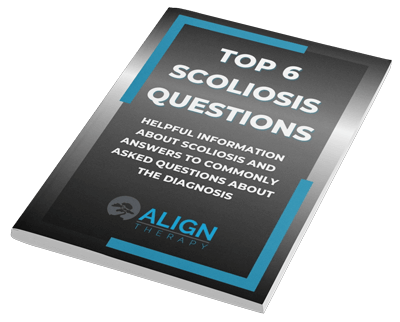Written somewhere over the Atlantic Ocean en route to Amsterdam…
As I’m writing this, I’m on a flight headed to Amsterdam on my way to Croatia. I’ve been looking forward to this trip for months—the food, the culture, the stunning coastline…and 3 days in a research conference all about scoliosis treatment.
But let’s be real…getting there isn’t exactly the glamorous part if you aren’t willing to, or can’t, upgrade to first class. Long flights can really be hard on anyone, but if you have scoliosis, kyphosis, or chronic back pain, sitting in a small airplane seat for hours can feel like torture.
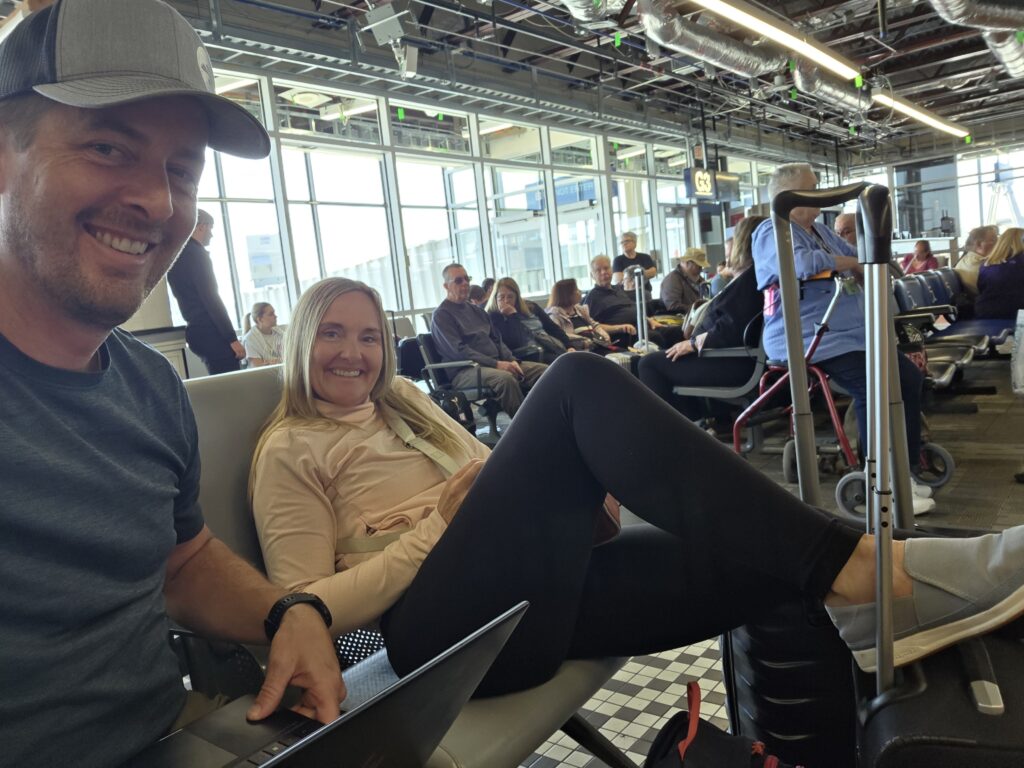
I know this because I have back issues too—and I work with patients every day who dread travel not because they don’t love adventure, but because of the aches and pains it brings. This could be that dull ache in your lower back, the tightness that spreads around your shoulders, or the sciatica pain down your leg that threatens to stop you from enjoying that first day on vacation.
The good news? With some preparation and a few tricks, you can make air travel a lot more manageable—maybe even comfortable. Whether you’re heading off to a beach or a business trip, I want to share the three simple strategies I’m using right now (yes, literally in seat 23A) to help reduce pain and make flying with scoliosis or spine conditions more doable.
1. Bring a Portable Massager (Your Back Will Thank You)
One of the best things I packed in my carry-on? A small massage ball from Hyperice.
If you’ve never used a vibrating massage ball, you’re missing out. These small devices can do great things for tight muscles, especially in the low back, hips, and shoulders. On long flights, muscles tend to tense up because of inactivity and poor posture being stuck in a small, uncomfortable seat. Using a massage ball or a massage gun during layovers or even during the flight can help relieve that tightness and improve circulation.
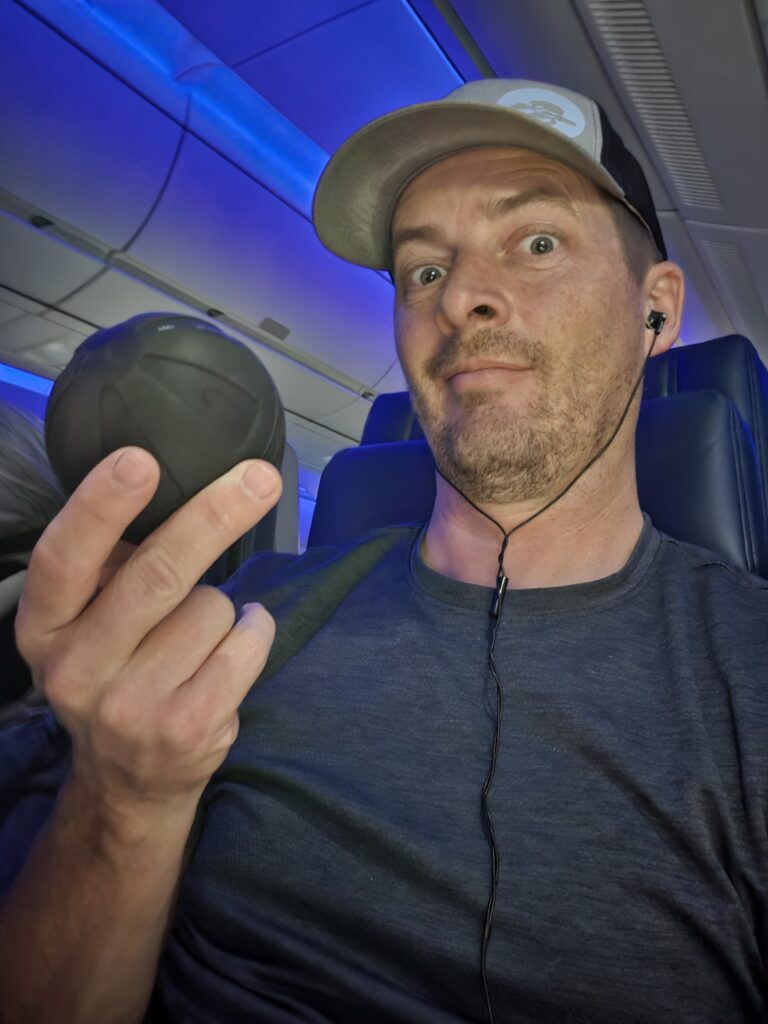
I tuck the massage ball behind my back when I start to feel my muscles tightening up and let it vibrate away some of the tension. Just a few minutes makes a noticeable difference. Some of my patients also use it under their hamstrings or glutes when they start to feel stiff.
The cool thing about the massage ball is it is small enough to fit in your personal item, and you can just put it between you and the seat and let it work its magic. With the sound of the airplane engines, you can’t even hear it going.
The next best thing is a massage gun small enough to fit in your bag. I highly recommend the hot and cold massage gun by Bob and Brad. It is powerful, but small enough to not worry about during travel.
Pro tip: Look for a massager that’s TSA-approved and battery-operated so it’s easy to carry and won’t get flagged at security. Size is important but make sure it still has the power you need.
2. Use a Support Pillow That Works for You
Not all travel pillows are created equal. And when you have scoliosis or a spine condition, your typical “U-shaped” neck pillow from the airport gift shop may not be the ideal choice.
The key is to support the right areas of your spine—not just your neck. For me, that means bringing a small lumbar roll that fits perfectly in the curve of my lower back. It helps me maintain better posture during the flight and prevents the slouch in the lumbar spine that leads to soreness and pain.
For others, especially if you have thoracic scoliosis or upper back discomfort, a pillow that supports the mid-back or shoulders may be more beneficial. Some of my patients even bring a second pillow to use between their back and the seat or to elevate their hips slightly.
On this flight, I tried a new inflatable pillow that allows you to lean forward with your face in a face hole, kind of like on a massage table. I don’t know about you, but trying to keep my head from slumping into a kinked position is a real struggle. Leaning forward is my preferred position.
It is still to be seen how this goes and if it is my preferred “pillow” for sleeping on an airplane, but so far so good. My wife even really likes using it.
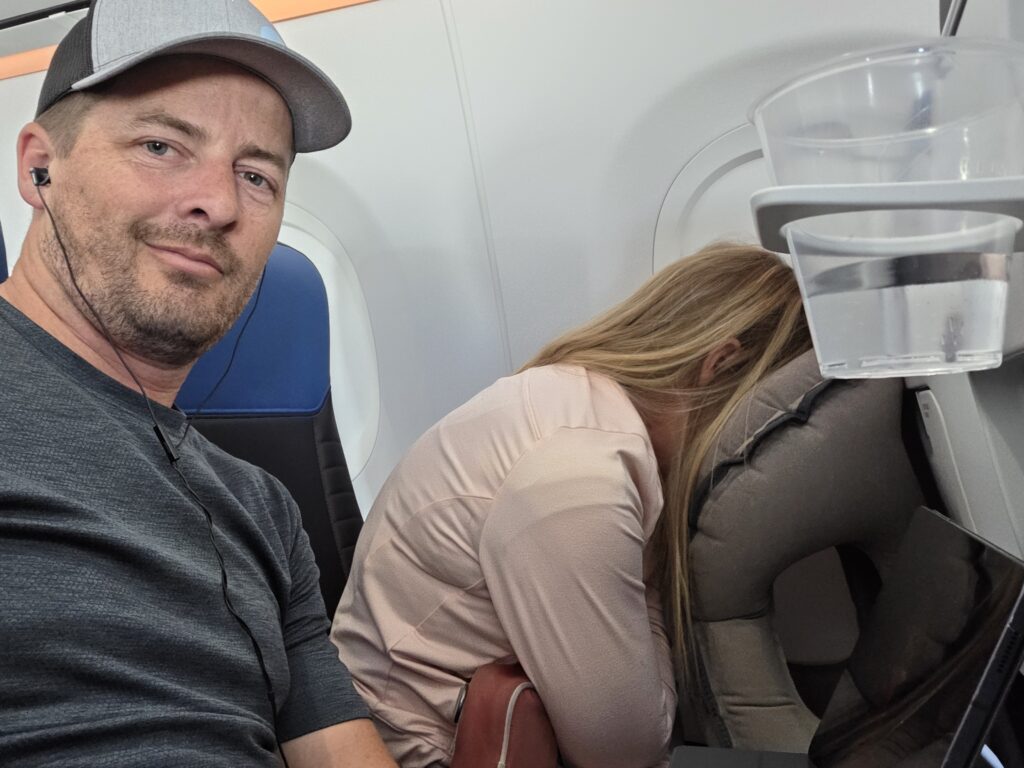
Try this: At home before your trip, test different pillow shapes and sizes while sitting in a chair for 30 minutes. See what feels best and bring that with you.
3. Get Up and Move as Often as You Can
This one might seem obvious, but it’s so often overlooked—especially when the seatbelt sign stays on longer than expected or the person next to you is fast asleep. .
Movement is absolutely crucial for people with spine conditions. Staying in one position for too long can increase stiffness, inflammation, and pain—especially around areas of curvature or imbalance.
On long flights (especially anything over 4 hours like this flight), I recommend getting up and moving every hour. Just a few minutes standing near the galley or doing some gentle stretches can completely change how your body feels when you land.
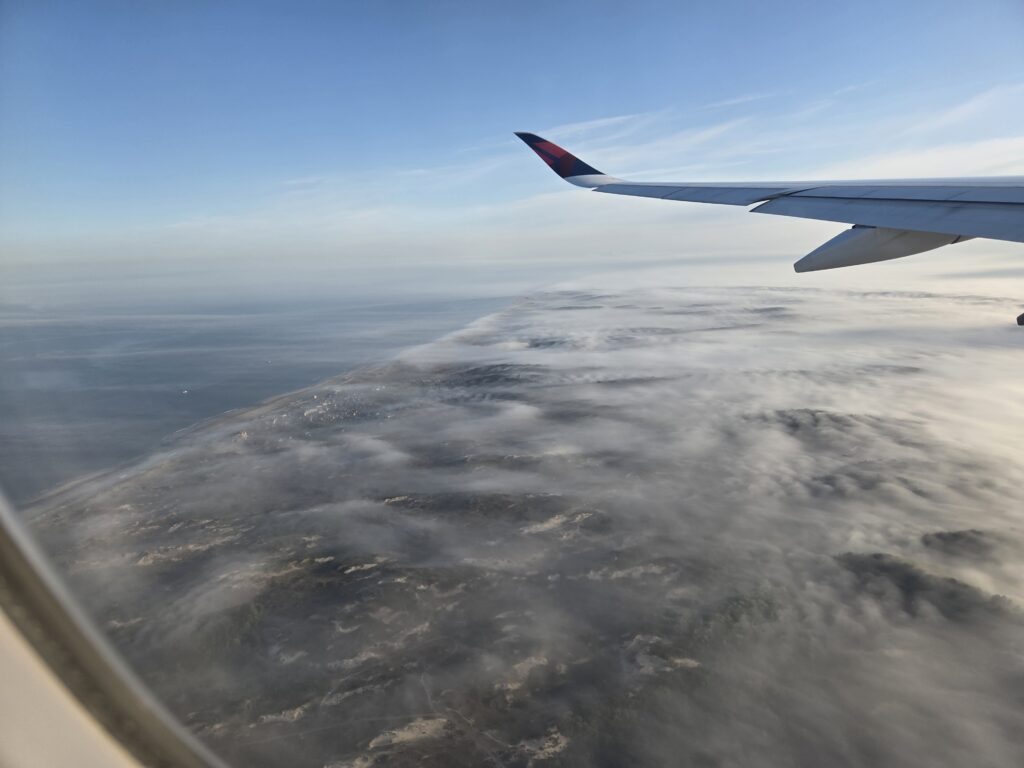
Try rolling your shoulders, gently twisting side to side, or doing small back extensions by placing your hands on your hips and leaning backward. I even stretch my calves, hip flexors, and hamstrings, if there’s room near the back of the plane.
Of course, “what if I am near the window or in the middle?” is what most people ask. This could be a tricky one because sitting by the window can give you something to lean on for support, but sitting on the aisle can allow you to get up more often. Really, it is up to you at that point. Being able to get up, however, is probably more helpful to reduce pain if done throughout the flight.
Tip: If getting up frequently isn’t an option, try doing seated stretches. Rotate your neck gently, pull one knee up toward your chest (if space allows), or do ankle circles to promote circulation.
A Few Bonus Travel Tips for Scoliosis and Back Pain:
- Stay hydrated. Dehydration can increase joint and muscle pain.
- Pack light—or use luggage with four wheels and handles on both sides to avoid uneven pulling that can aggravate your spine.
- Stretch before and after the flight. Give your body a little love before takeoff and after landing.
- Talk to your physical therapist. A quick pre-travel visit can help loosen things up and prepare your body for the flight.
Want to Travel Without Dreading the Flight?
If flying has felt harder recently or if your back pain has been getting worse during trips, you don’t have to just “deal with it.” A lot of our patients are surprised at how much better they feel once they understand why their back hurts and what to do about it—especially when travel is involved.
Whether it’s scoliosis, an old injury, or general back stiffness that gets worse when you travel, we can help you feel more confident and comfortable before your next trip.
👉 Click here to book a FREE consultation with one of our spine specialists. We’ll chat about your symptoms, your travel plans, and give you specific strategies (and stretches!) tailored to your body and your goals.
Your vacation shouldn’t start with pain. Let’s get ahead of it—so you can enjoy every step, every hike, every photo, and every memory without your back holding you back.Safe travels,
David Butler, Physical Therapist


